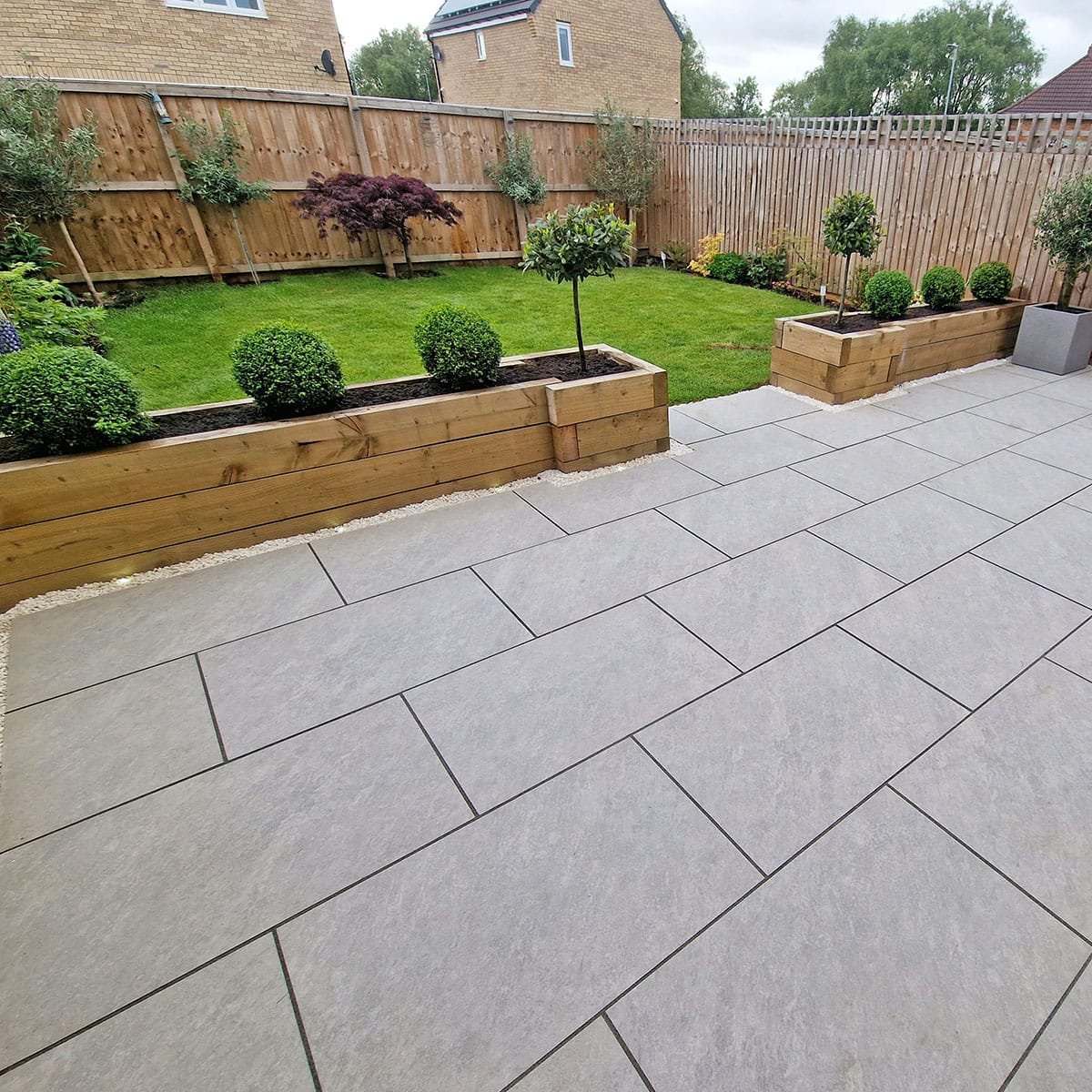Landscaping is more than just planting flowers and trimming hedges; it’s an art that transforms outdoor spaces into breathtaking retreats. Whether you're looking to enhance your garden or create a serene backyard escape, understanding the fundamentals of landscape design can make all the difference. In Dublin, where natural beauty meets urban living, good landscaping can elevate your property while reflecting your personal style.
Imagine stepping outside to a well-designed garden that brings joy year-round. This isn’t merely about aesthetics—it’s about creating an environment that nurtures relaxation and connection with nature. The right approach to gardening and landscaping not only boosts curb appeal but also adds value to your home.
👉 Ready to reimagine your garden? Contact Lion Paving & Landscaping for a personalized consultation.
Let’s dive into the four basic elements of landscape design, helping you shape the perfect outdoor oasis in Dublin!
The 4 Basic Elements of Landscape Design
Understanding the fundamental elements of landscape design is crucial for creating an aesthetically pleasing outdoor space. These four components serve as a foundation for any successful project.
👉 Need help bringing structure to your garden layout? Let Lion Paving & Landscaping show you how.
- First, consider line, shape, and form. They direct movement and set the character of your garden. Curved pathways can create flow, while geometric shapes bring structure.
- Next comes color and texture. Color adds vibrancy and mood to a landscape. Textures provide depth; combining smooth stones with rough bark creates visual interest.
- Scale and proportion are vital in ensuring that elements fit harmoniously within your space. Every plant or feature should be appropriately sized relative to its surroundings.
- Unity and balance tie everything together, allowing different elements to coexist peacefully without clashing visually or thematically.
Embracing these basic elements will transform any garden into a cohesive masterpiece that reflects both functionality and beauty.
Line, Shape, and Form
Lines, shapes, and forms are fundamental aspects of landscape design. They serve as the backbone for structure and organization in any outdoor space.
Lines can lead the eye through a garden. Curved paths invite exploration while straight lines suggest formality and order. Think about how these lines shape the movement within your landscape.
Shapes add character. Geometric patterns bring a modern feel, while organic shapes create a more natural ambiance. The interplay between different shapes can transform an ordinary area into something extraordinary.
Forms refer to three-dimensional elements like trees or shrubs that provide depth. Designing with various heights creates visual interest and layers in your garden layout.
Incorporating these elements effectively requires thoughtful planning. Each line, shape, or form plays its role in crafting a cohesive environment that feels balanced and inviting.
Color and Texture
Color plays a vital role in landscape design, influencing mood and perception. Bright colors can energize a space, while softer hues create tranquility. Using a variety of shades brings depth and vibrancy to gardens.
Texture adds another dimension altogether. It involves the surface quality of plants, materials, and even hardscaping elements like stones or patios. A smooth stone path contrasts beautifully with the rough bark of trees or plush greenery.
Combining different textures enriches visual interest. For instance, pairing feathery grasses with bold-leaved plants creates an engaging experience for the senses.
Consider how light interacts with color and texture throughout the day. Shadows play across surfaces, revealing hidden patterns that change from morning to evening—an ever-evolving canvas that enhances your outdoor spaces.
When designing your garden layout in Dublin's unique climate, be mindful of these elements to achieve harmony and beauty in your landscaping project.
Scale and Proportion
Scale and proportion are vital in landscape design. They dictate how various elements interact within a space, creating harmony or dissonance.
When designing your garden, consider the size of plants relative to their surroundings. Large trees may overwhelm small flowers but create a majestic backdrop if positioned thoughtfully.
Proportion also affects visual appeal; a massive boulder can serve as an eye-catching centerpiece when balanced with smaller stones or delicate foliage around it. This balance helps guide the viewer's eye through the landscape.
👉 Let us help you balance elements for a flawless, natural look. Call today at +353 85 778 0394 for a site visit!
Incorporating pathways that match the scale of your garden can enhance accessibility while adding aesthetic value. Narrow paths suit intimate spaces, while broad walkways invite exploration in larger areas.
Understanding these concepts allows you to create vibrant landscapes that feel cohesive and well-planned, elevating any outdoor space into something extraordinary.
Unity and Balance
Unity and balance are foundational concepts in landscape design. They create a cohesive look that draws the eye naturally across your outdoor space.
Unity involves connecting various elements, ensuring they complement one another. This can be achieved through repeated colors, materials, or plant types. When done correctly, every part of the garden feels like it belongs together.
Balance brings harmony to your landscape. It can be symmetrical or asymmetrical. Symmetrical designs offer a formal feel with matching elements on either side of a central point. Asymmetry creates interest by placing different items that still achieve visual weight equivalently across the space.
Integrating these principles not only enhances beauty but also promotes functionality in your garden. A well-balanced design invites exploration and comfort while maintaining an inviting atmosphere for relaxation and enjoyment.
How to Incorporate these Elements in Landscaping Projects
Incorporating the basic elements of landscape design into your projects requires a thoughtful approach.
- Start by sketching out your ideas on paper. This allows you to visualize lines and shapes, ensuring they complement each other seamlessly.
- Next, consider color palettes that enhance the natural beauty of your space. Choose plants with varied textures to add depth and interest. Don’t shy away from experimenting with different foliage types.
- Scale is vital; choose larger plants for focal points while smaller ones can neatly fill spaces without overwhelming the area. Balance these elements evenly across your garden for harmony.
- Unity ties everything together; use similar colors or materials throughout for cohesiveness.
👉 Not sure where to start? Book a design session with our Dublin landscaping pros today.
Remember, landscaping is not just about aesthetics but creating an inviting atmosphere that reflects personal style and enhances outdoor living spaces in Dublin homes.
Benefits of Professional Landscaping Services in Dublin
Hiring professional landscaping services in Dublin can transform your outdoor space into a stunning haven. Experienced landscapers understand the local climate and soil conditions, ensuring that plants thrive.
They bring creativity to the table, designing gardens that reflect your style while enhancing curb appeal. With access to high-quality materials and tools, professionals can execute intricate designs efficiently.
👉 Trust your landscape to local experts. Get a FREE QUOTE from Lion Paving & Landscaping now.
Time is another significant factor. A skilled team can complete projects faster than DIY efforts, allowing you more time to enjoy your beautiful garden rather than laboring over it.
Additionally, professional services often include maintenance plans. This means ongoing care for your landscape, keeping it pristine throughout the seasons.
Investing in expert gardening and landscaping ensures long-lasting results that elevate both aesthetics and property value. Choose seasoned experts like Lion Paving & Landscaping who prioritize quality workmanship tailored to individual needs for exceptional outcomes.
Conclusion
Landscaping is more than just planting flowers or laying down sod. It’s an art that combines various elements to create a harmonious outdoor space. Understanding the four
basic elements of landscape design—line, shape and form, color and texture, scale and proportion, unity and balance—can elevate your garden from average to extraordinary.
Incorporating these principles into your landscaping projects can enhance not only the aesthetic appeal but also increase the functional value of your outdoor areas. Whether it’s creating a cozy nook with strategically placed plants or designing pathways using stones for added character, the possibilities are endless.
👉 Take the first step toward your dream garden—partner with Lion Paving & Landscaping today.
Transforming your outside space doesn’t have to be daunting. With careful planning and perhaps some expert guidance from services like Lion Paving & Landscaping in Dublin, you can achieve a beautifully designed landscape tailored specifically for you.
Transform your outdoor space into a work of art with Lion Paving & Landscaping!
Read More
Step-by-Step Guide to Installing Your Own Gravel Driveway: Tips and Tricks
Common Mistakes to Avoid When Installing a Concrete Driveway
Step-by-Step Guide to Finding the Best Paver Installation Company
The Ultimate Guide to Paving and Landscaping for Beautiful, Lasting Outdoor Spaces







